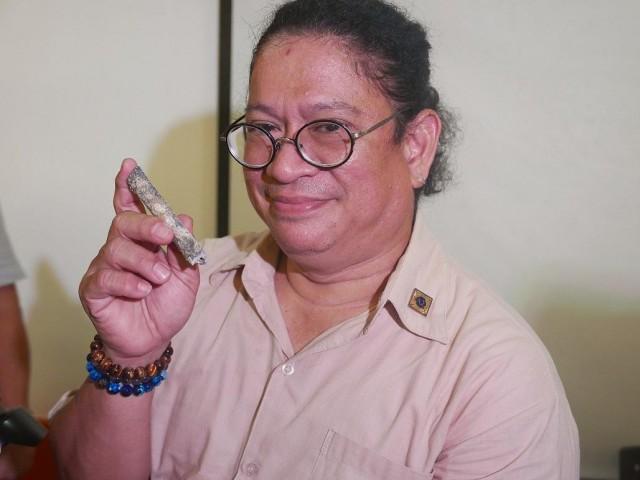Homo luzonensis: What we know about the newly discovered human species
The world is buzzing with questions following the rare discovery of a new human species by a Pinoy archeologist-led international team.
While the team got enough proof to state that the fossils were a new human species, Homo luzonensis, they couldn’t presume to know much more than that.
But based on the evidence, this is what we could gleam from the fossils dug up from Callao Cave in Cagayan.
1. They were bipedal
Armand Salvador Mijares, the Filipino archeologist who led the project since 2007, said that the bones had a “mosaic of primitive (Australopithecus-like) and derived (Homo sapiens-like) morphological features.”
A curvature of the foot bone (proximal pedal phalanx) makes it distinctive from those of the other species.
_2019_04_11_15_17_59.jpg)
Mijares and the rest of his team presented their findings during a press conference at the University of the Philippines Diliman on Thursday.
They deduced that the H. luzonensis are bipedal, but noted that this doesn’t necessarily mean they were erect.
“The problem is we only have the foot bone. We did compare it with other primates. And definitely it’s a fully bipedal creature. It can walk,” Mijares said.
“Maybe it has better climbing capability than homo sapiens,” he added.
2. They were small-bodied
Mijares said that they discovered the first bone in 2007. This first bone is comparable to the Filipino negrito due to its small size.

Because they lacked further evidence at the time and could not say that it was a new species yet, they labeled the fossil as that of a “small-bodied H. sapiens.”
Further pieces of evidence dug up in 2011 and 2015 back the existence of the H. luzonensis, and further proved that the creatures were small-bodied.
“What we can say is that they’re small-bodied, how small we don’t know. Small because their teeth are very small,” he said.
3. They overlapped with homo sapiens at some point
The fossils were determined to be 50,000-67,000 years old, which means the H. luzonensis predates the Homo sapiens found on Palawan, estimated to be 30,000-40,000 years old.
This would make the H. luzonensis the earliest human remains to be found in the Philippines.
_2019_04_11_15_19_28.jpg)
Mijares said that the H. luzonensis and H. sapiens may have overlapped at some point.
“They might have [coexisted]. Parang venn diagram yan, they overlapped sometime. But we don’t know if they had direct contact,” he said.
4. They didn’t make use of Callao Cave
Everything came from Africa, so it’s a total mystery how this particular species wound up in Luzon.
At the time, Luzon was not accessible by foot, which means they crossed the sea somehow — whether it was intentional or accidental cannot be determined yet — and adapted to their new environment.
And while their remains were dug up from Callao Cave, they didn’t live, or die, there. In fact, Mijares said that there wasn’t even a cave entrance at the time these creatures existed in the area.
“The creatures did not die [in Callao Cave]. It was actually washed in the cave. They were actually not using the cave,” Mijares clarified.
_2019_04_11_15_18_14.jpg)
“They were just wandering around and they probably died there...the bones washed in the cave,” he added.
Needless to say, the new discovery only served to raise more questions.
Mijares said that this is just the start, and that further opening the window to the past more would take a lot more work.
“We need to do more work. Digging this time period takes a long time, and perseverance, and patience,” he said.
“It’s just a start of what we discovered. We will discover more,” hopefully soon. — LA, GMA News



